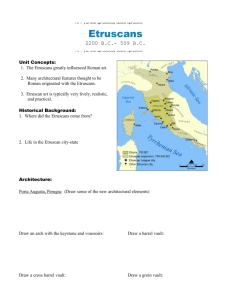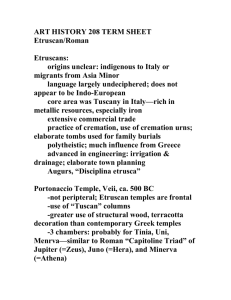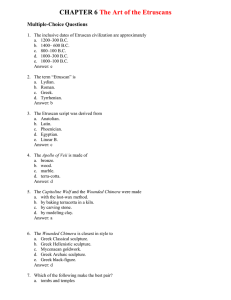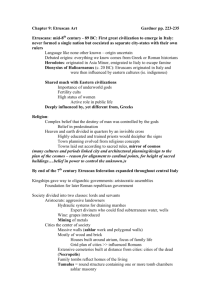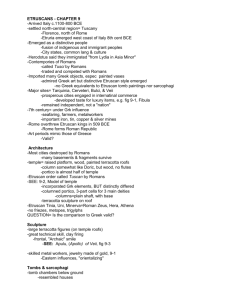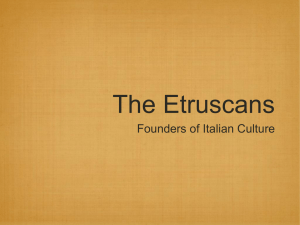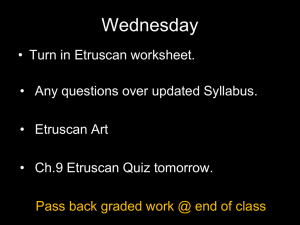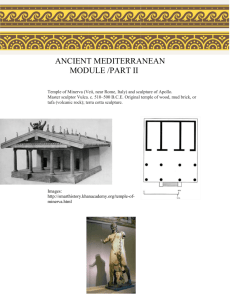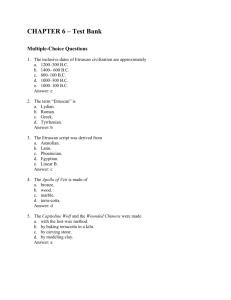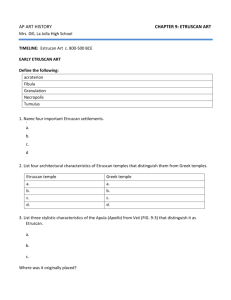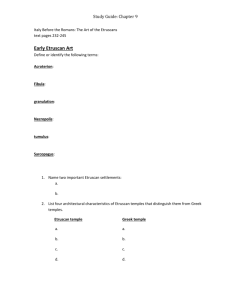Define the following terms Chapter Questions
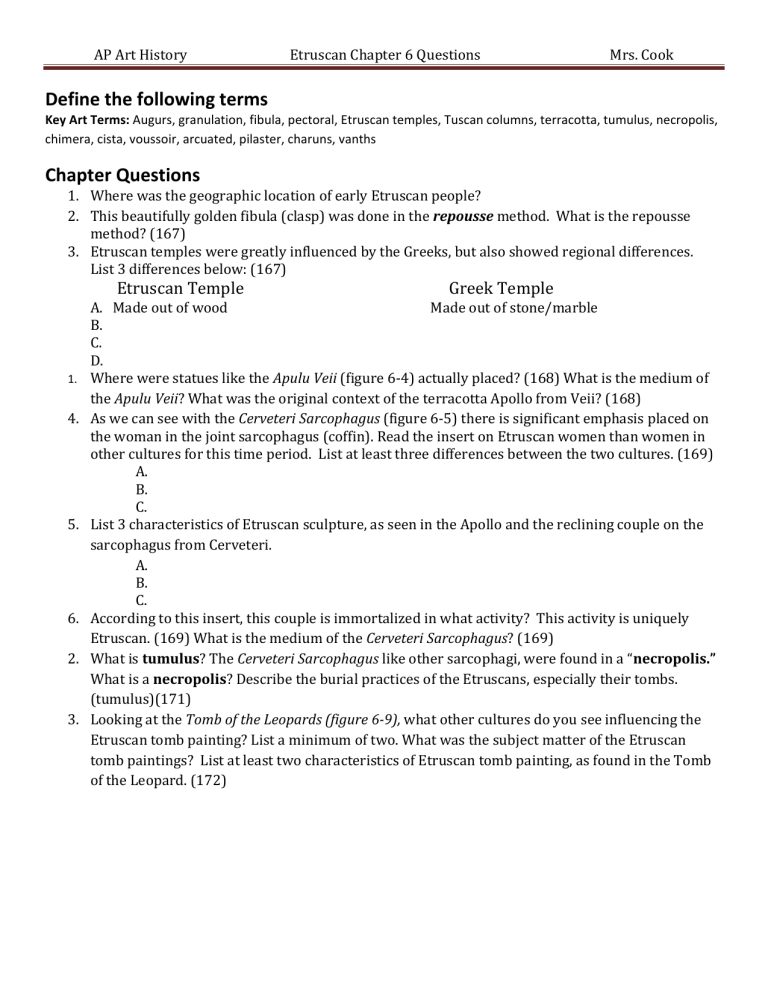
AP Art History Etruscan Chapter 6 Questions Mrs. Cook
Define
the
following
terms
Key Art Terms: Augurs, granulation, fibula, pectoral, Etruscan temples, Tuscan columns, terracotta, tumulus, necropolis, chimera, cista, voussoir, arcuated, pilaster, charuns, vanths
Chapter
Questions
1.
Where was the geographic location of early Etruscan people?
2.
This beautifully golden fibula (clasp) was done in the repousse method. What is the repousse method? (167)
3.
Etruscan temples were greatly influenced by the Greeks, but also showed regional differences.
List 3 differences below: (167)
1.
Etruscan Temple Greek Temple
A.
Made out of wood Made out of stone/marble
B.
C.
D.
Where were statues like the Apulu Veii (figure 6‐4) actually placed? (168) What is the medium of the Apulu Veii ? What was the original context of the terracotta Apollo from Veii? (168)
4.
As we can see with the Cerveteri Sarcophagus (figure 6‐5) there is significant emphasis placed on the woman in the joint sarcophagus (coffin). Read the insert on Etruscan women than women in other cultures for this time period. List at least three differences between the two cultures. (169)
A.
B.
C.
5.
List 3 characteristics of Etruscan sculpture, as seen in the Apollo and the reclining couple on the sarcophagus from Cerveteri.
A.
B.
C.
6.
According to this insert, this couple is immortalized in what activity? This activity is uniquely
Etruscan. (169) What is the medium of the Cerveteri Sarcophagus ? (169)
2.
What is tumulus ? The Cerveteri Sarcophagus like other sarcophagi, were found in a “ necropolis.”
What is a necropolis ? Describe the burial practices of the Etruscans, especially their tombs.
(tumulus)(171)
3.
Looking at the Tomb of the Leopards (figure 6 9), what other cultures do you see influencing the
Etruscan tomb painting? List a minimum of two. What was the subject matter of the Etruscan tomb paintings? List at least two characteristics of Etruscan tomb painting, as found in the Tomb of the Leopard. (172)
